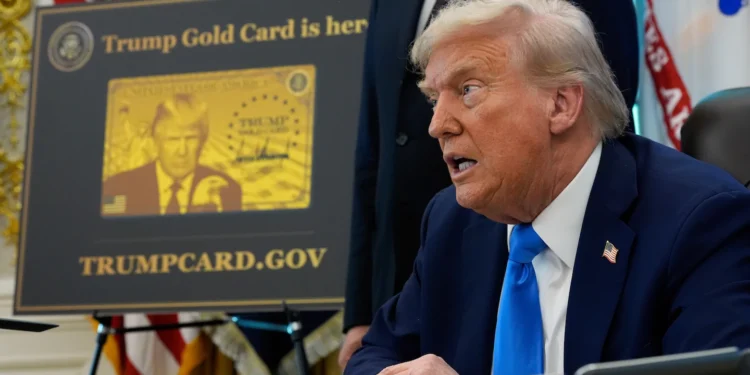The United States Chamber of Commerce initiated legal proceedings against the Trump administration Thursday, challenging a newly implemented $100,000 fee structure for H-1B visa applications.
The lawsuit represents the organization’s first formal legal challenge to the administration during this term.
Filed in the U.S. District Court for the District of Columbia, the complaint argues that the substantial fee increase violates provisions of the Immigration and Nationality Act. The business advocacy organization contends the policy constitutes both flawed economic strategy and an overreach of executive authority, requesting judicial intervention to halt implementation of the fee structure.
While other entities have previously challenged the visa fee policy through litigation, this action carries particular weight given the Chamber’s position as one of Washington’s most influential business organizations. The group has notably refrained from pursuing legal action against other controversial administration policies, including tariff implementations that have generated concern among businesses of varying scales across multiple economic sectors.
Neil Bradley, the Chamber’s executive vice president and chief policy officer, addressed the potential impact of the fee increase in a prepared statement. Bradley argued that the $100,000 charge would create prohibitive financial barriers, particularly affecting emerging companies and small to medium-sized enterprises that rely on the H-1B program to access international talent necessary for domestic operational expansion.
The White House defended the policy through spokeswoman Taylor Rogers, who characterized the administration’s actions as legally sound and aligned with campaign commitments to prioritize American workers. Rogers stated that the fee structure aims to discourage system exploitation and wage suppression while maintaining pathways for employers to recruit exceptional international candidates.
The visa fee announcement accompanied an executive order establishing alternative immigration pathways, including a $1 million “gold card” option for individual foreign nationals and a $2 million “corporate gold card” allowing companies to sponsor multiple employees for U.S. residency.
Commerce Secretary Howard Lutnick previously explained that the administration calculated the $100,000 fee to discourage companies from utilizing the program for entry-level positions, instead focusing recruitment efforts on highly skilled professionals in engineering and executive leadership roles.
The H-1B program traditionally serves employers seeking foreign workers with specialized expertise, predominantly in scientific and technological fields, when qualified domestic candidates cannot be identified. While technology sector companies represent the program’s primary beneficiaries, employers across manufacturing, financial services, education, retail, and healthcare sectors also participate.
The mid-September policy announcement generated significant uncertainty among current visa holders and participating employers nationwide. The administration subsequently issued clarifications indicating the changes would not affect individuals currently holding H-1B visas.
Prior to this policy modification, approximately 85,000 new H-1B visas became available annually, with congressional exemptions for academic institutions excluded from this ceiling. During the most recent application cycle, the government processed roughly 425,000 petitions, selecting recipients through lottery methodology. Previous fee structures, varying by employer characteristics, typically totaled under $5,000 excluding legal representation costs.
Despite the legal challenge, Chamber leadership expressed support for other administration economic initiatives. Bradley acknowledged the administration’s efforts regarding tax policy reform, energy sector development, and regulatory reduction while emphasizing that economic growth objectives necessitate workforce expansion rather than contraction. He noted shared objectives between the Chamber and administration regarding attracting and retaining highly qualified international talent within the United States.







